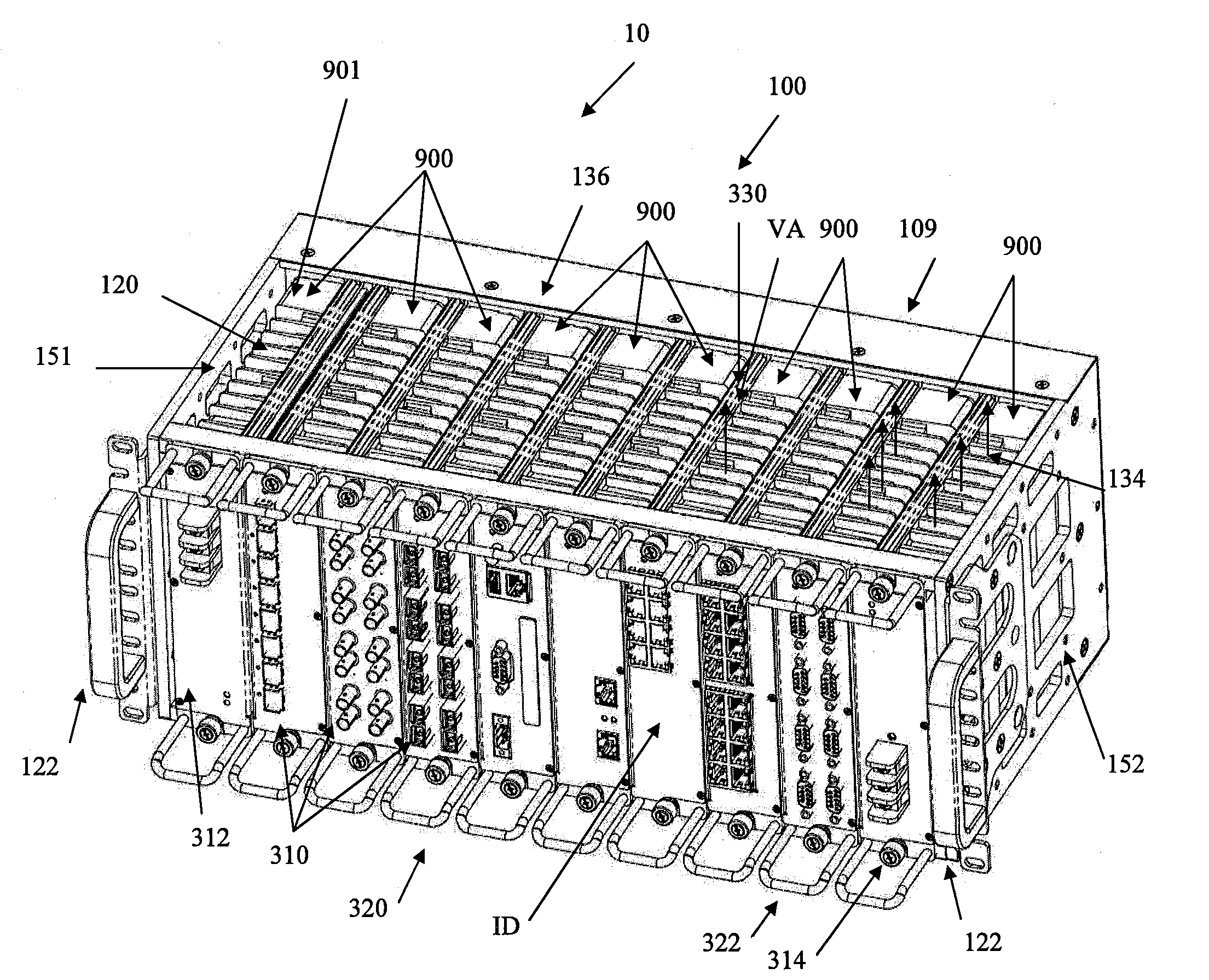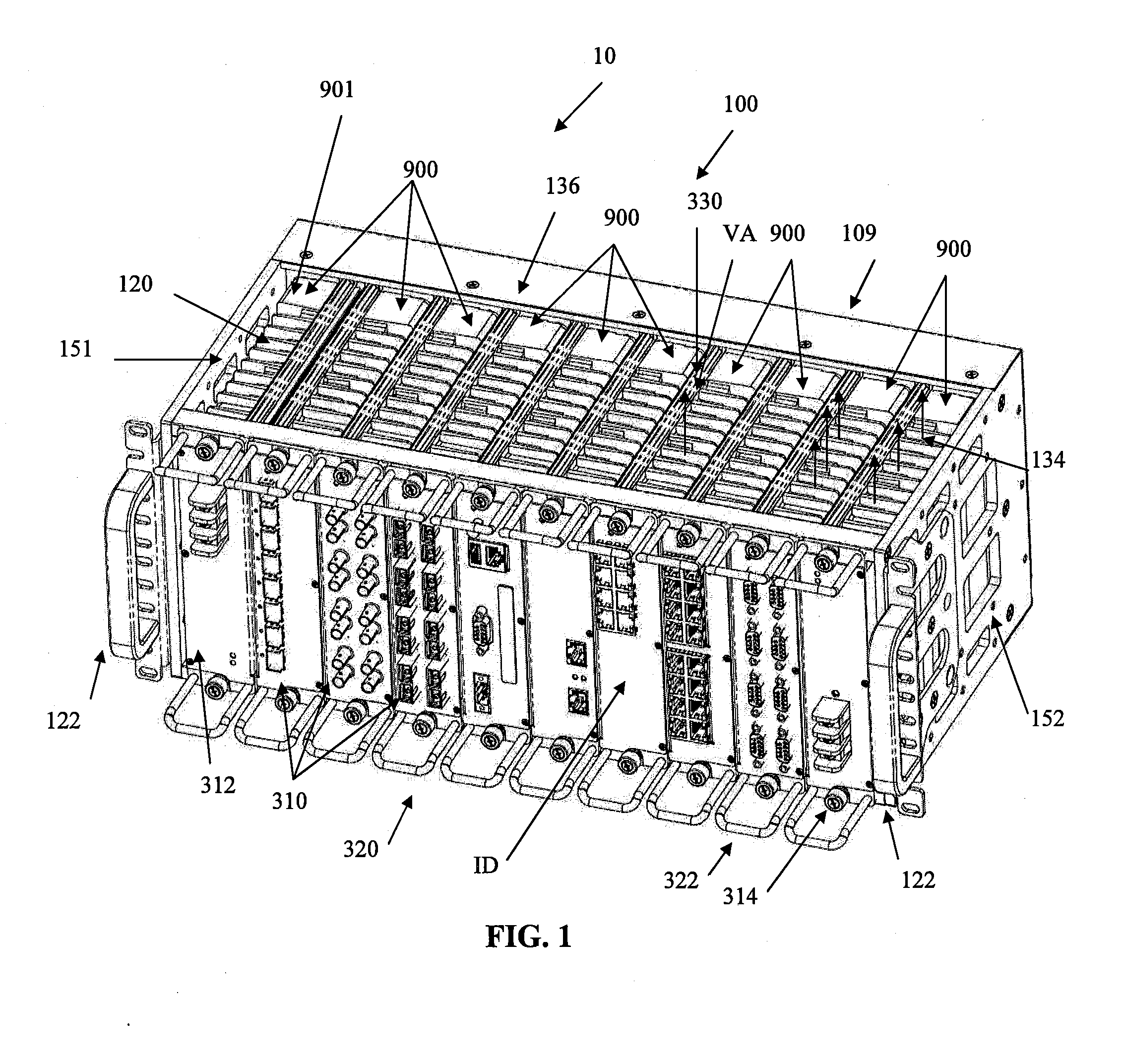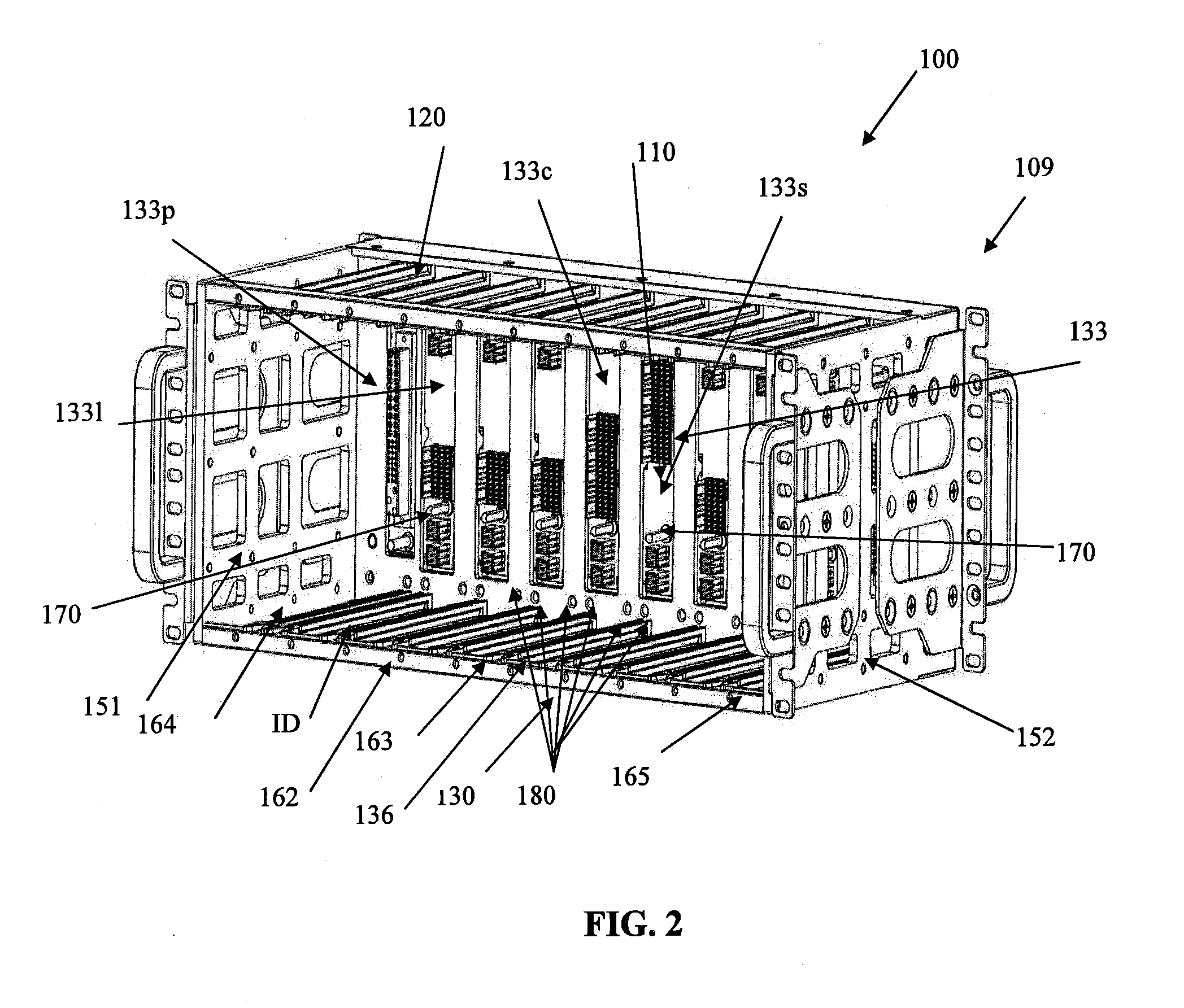Open Frame Electronic Chassis For Enclosed Modules
a technology of electronic chassis and enclosed modules, which is applied in the field of passive cooling modular electronic systems having an openframe chassis, can solve the problems of other components failing, forced air cooling modular electronic systems not operating well in harsh environments, and electrical components in the modules tending to generate large amounts of heat, so as to reduce the cost, reduce the mean time between failures of the modules, and reduce the generated heat
- Summary
- Abstract
- Description
- Claims
- Application Information
AI Technical Summary
Benefits of technology
Problems solved by technology
Method used
Image
Examples
Embodiment Construction
[0034]Preferred embodiments of the invention and its advantages can be understood by referring to the present drawings. In the present drawings, like numerals are used for like and corresponding parts of the accompanying drawings.
[0035]As shown in FIGS. 1 and 3 to 6, one embodiment of the present invention provides a passively cooled module electronic system, as shown generally by reference numeral 10. The passively cooled modular electronic system 10 comprises an open frame chassis, as shown generally by reference numeral 100, and at least one and preferably a plurality of modules 900. While FIG. 1 shows modules in all of the slots 163 of the open frame chassis, it is understood that modules 900 may only be present in some of the slots 163.
[0036]The open frame chassis 100 is better shown in FIG. 2 where all the modules 900 have been removed from the slots 163. As illustrated in FIG. 2, the open frame chassis 100 comprises a bottom opening 130 and a top opening 120. It is understood...
PUM
 Login to View More
Login to View More Abstract
Description
Claims
Application Information
 Login to View More
Login to View More - R&D
- Intellectual Property
- Life Sciences
- Materials
- Tech Scout
- Unparalleled Data Quality
- Higher Quality Content
- 60% Fewer Hallucinations
Browse by: Latest US Patents, China's latest patents, Technical Efficacy Thesaurus, Application Domain, Technology Topic, Popular Technical Reports.
© 2025 PatSnap. All rights reserved.Legal|Privacy policy|Modern Slavery Act Transparency Statement|Sitemap|About US| Contact US: help@patsnap.com



